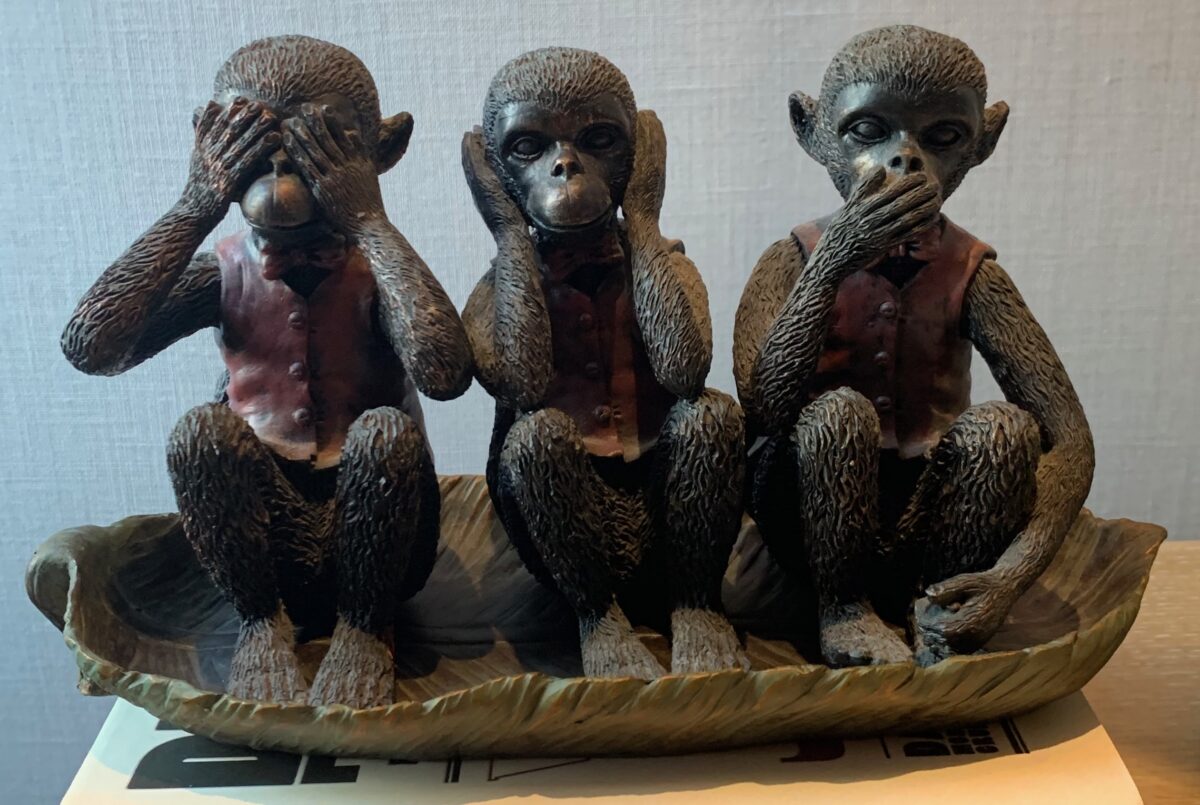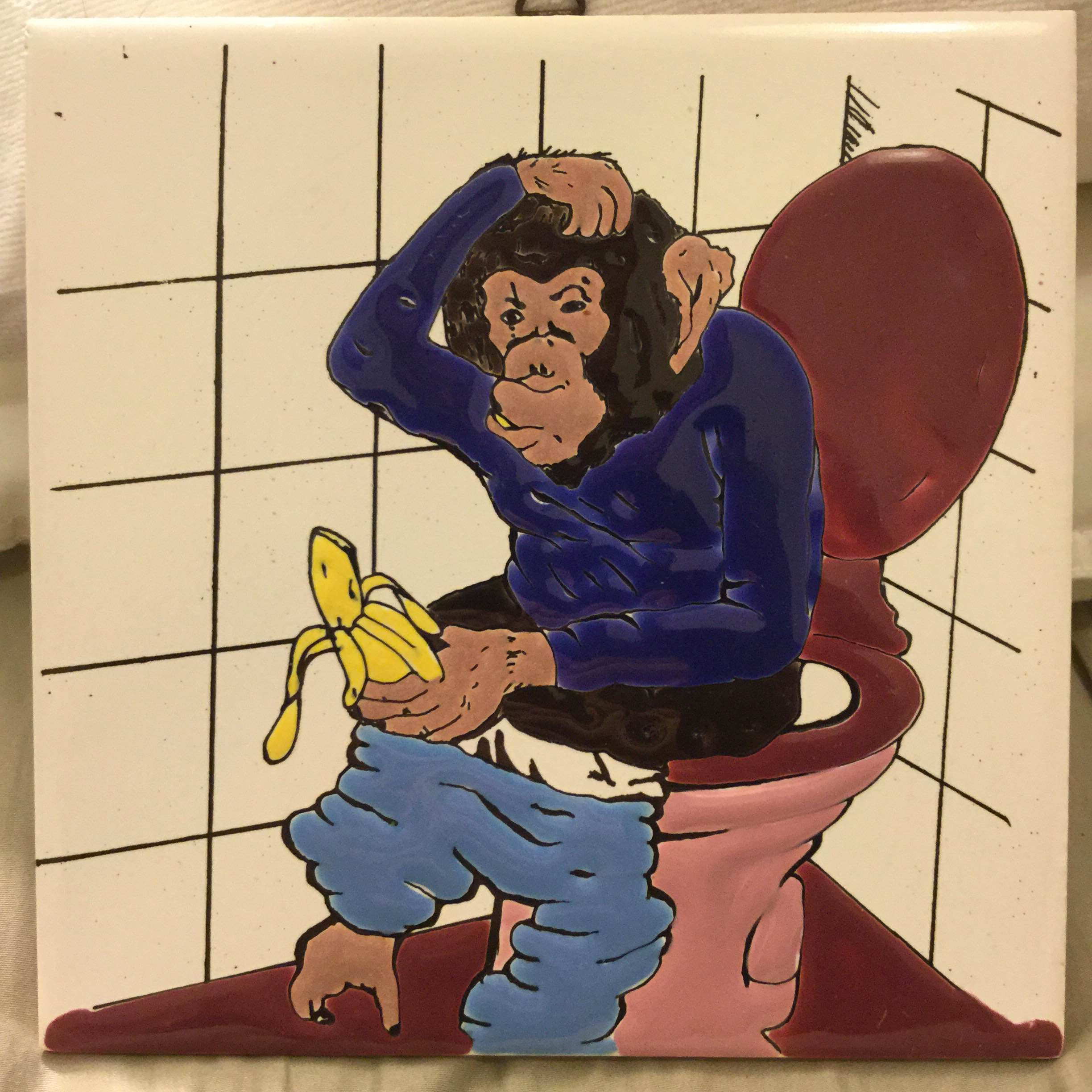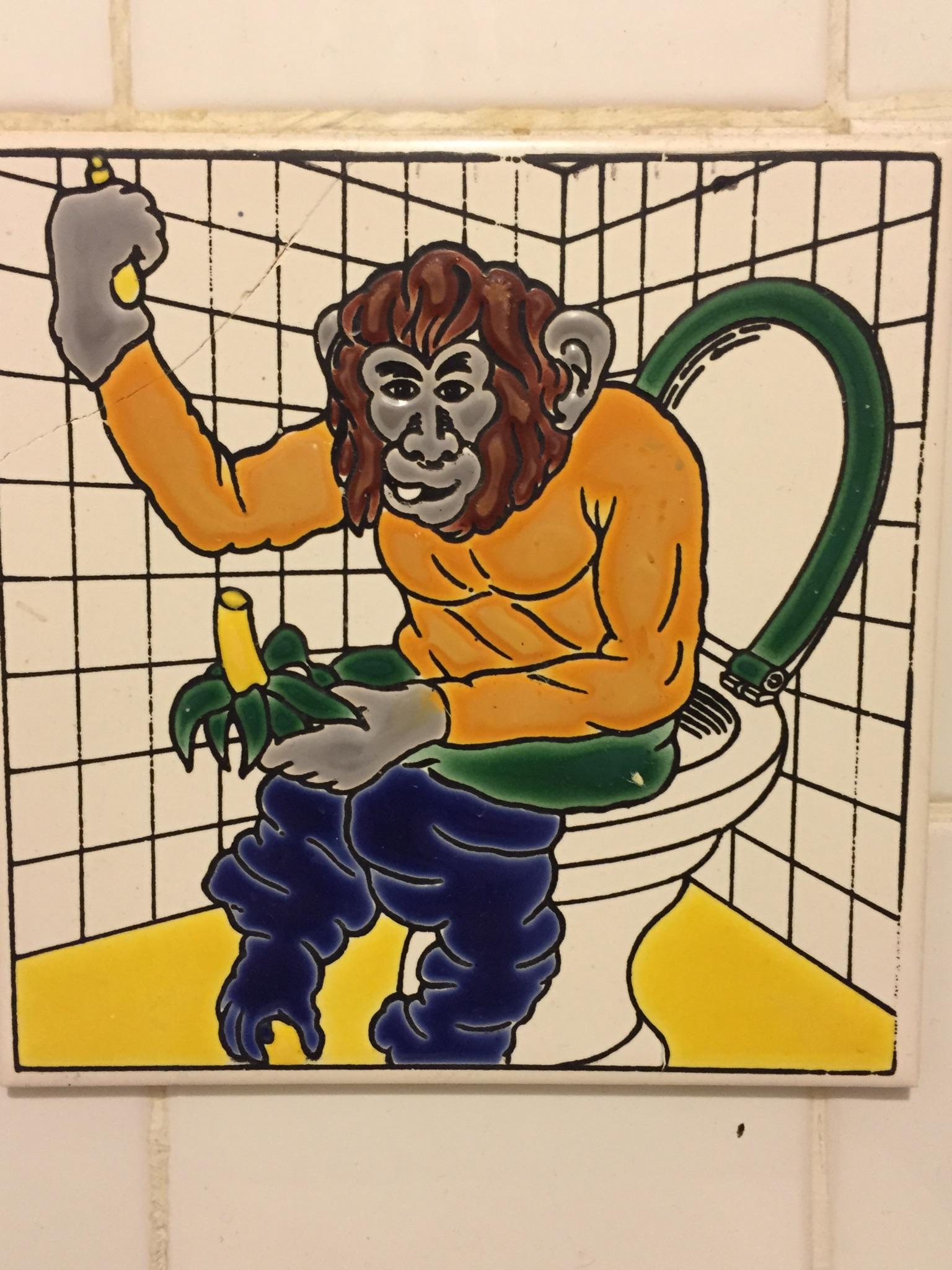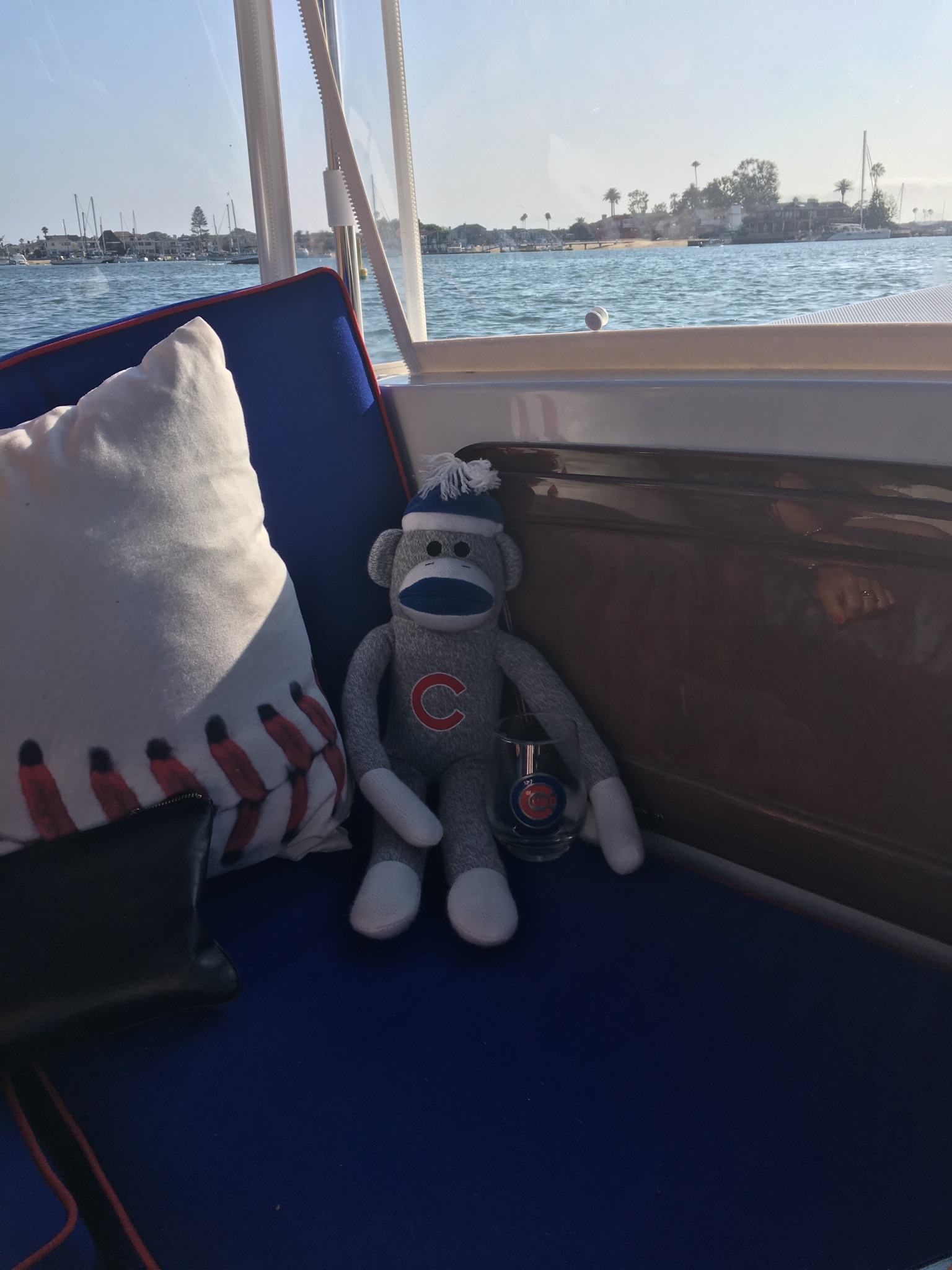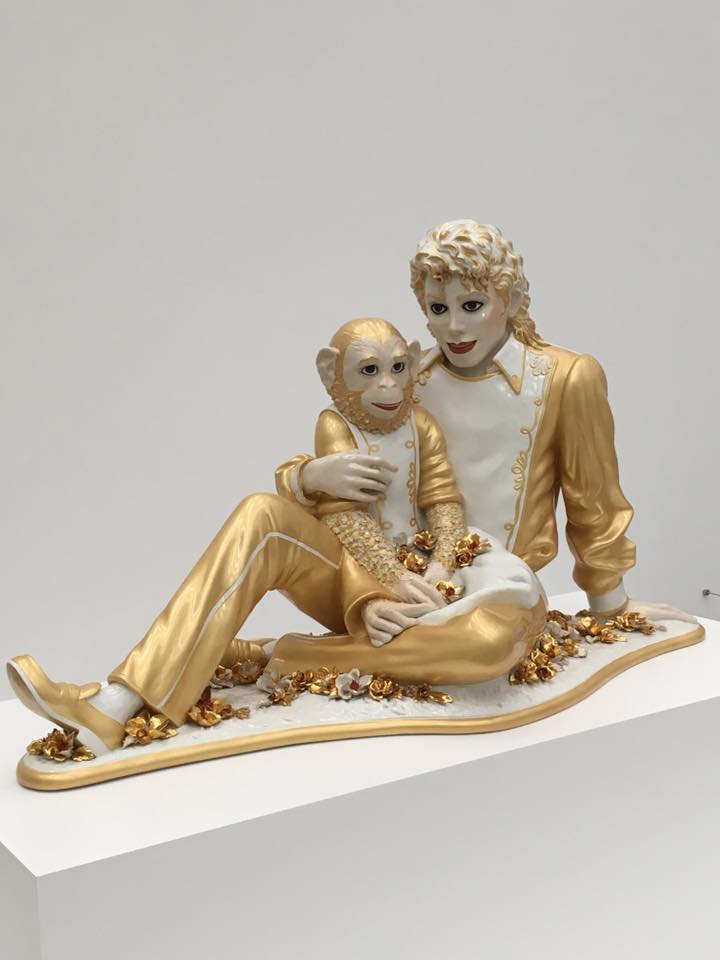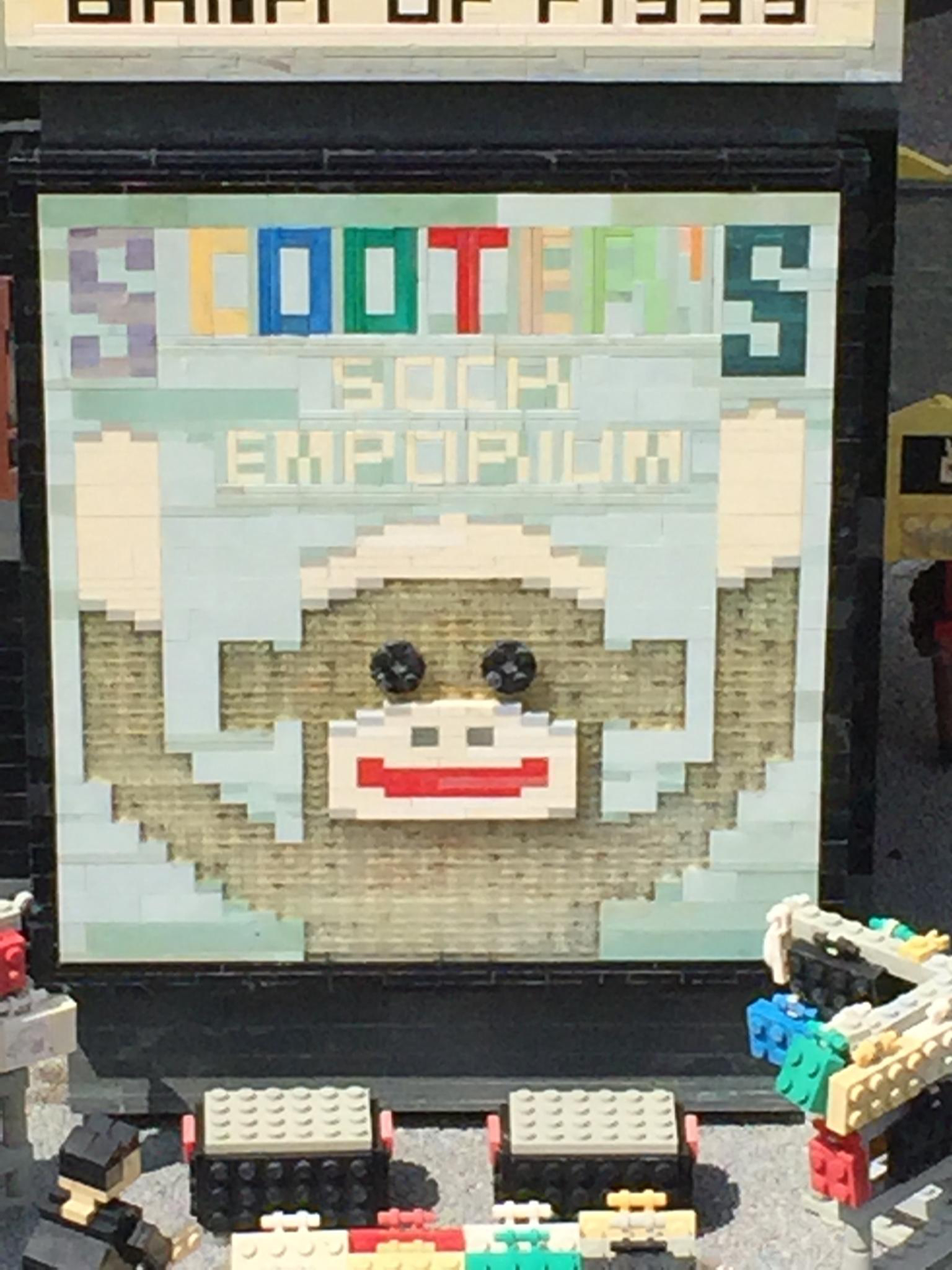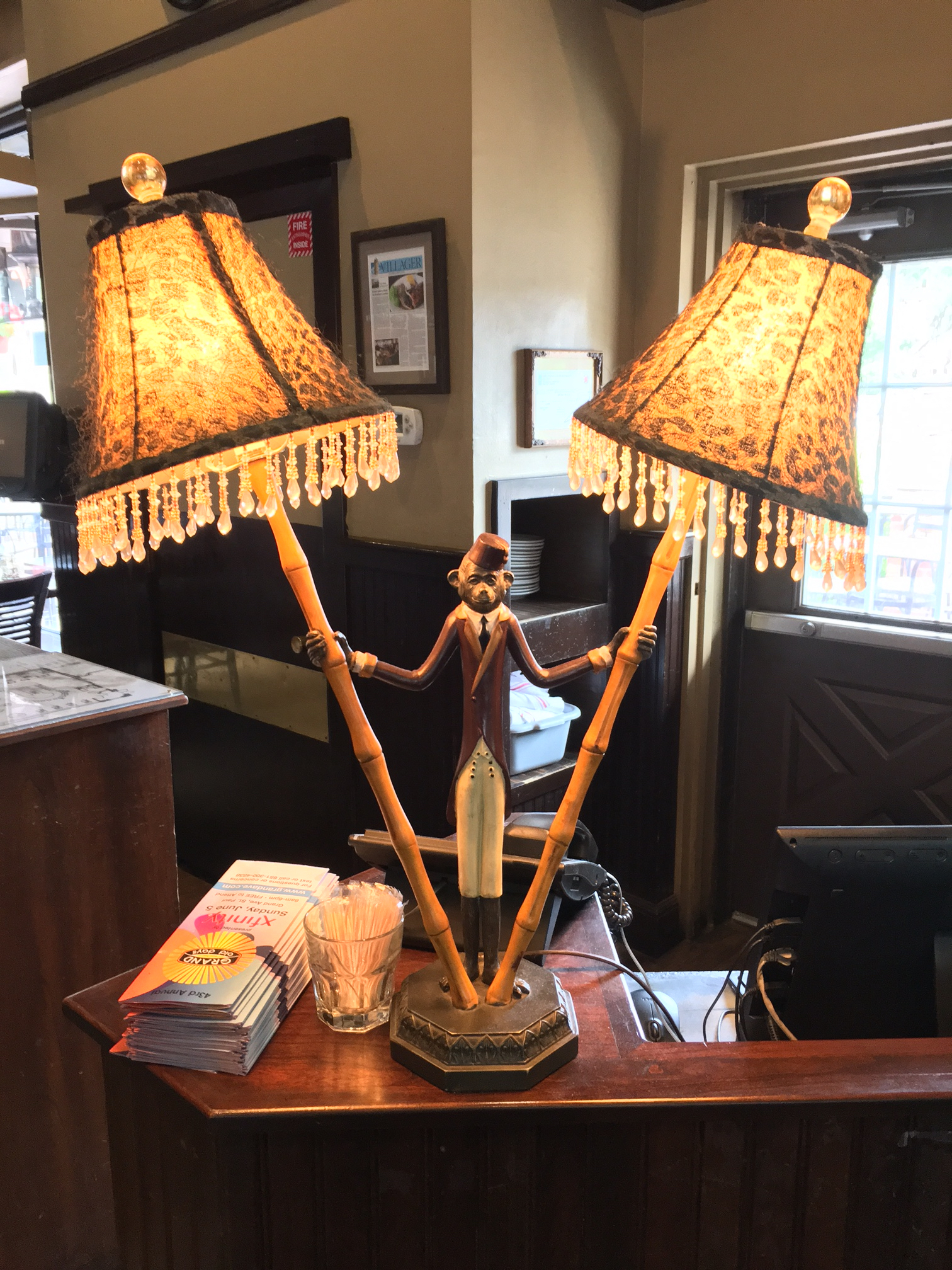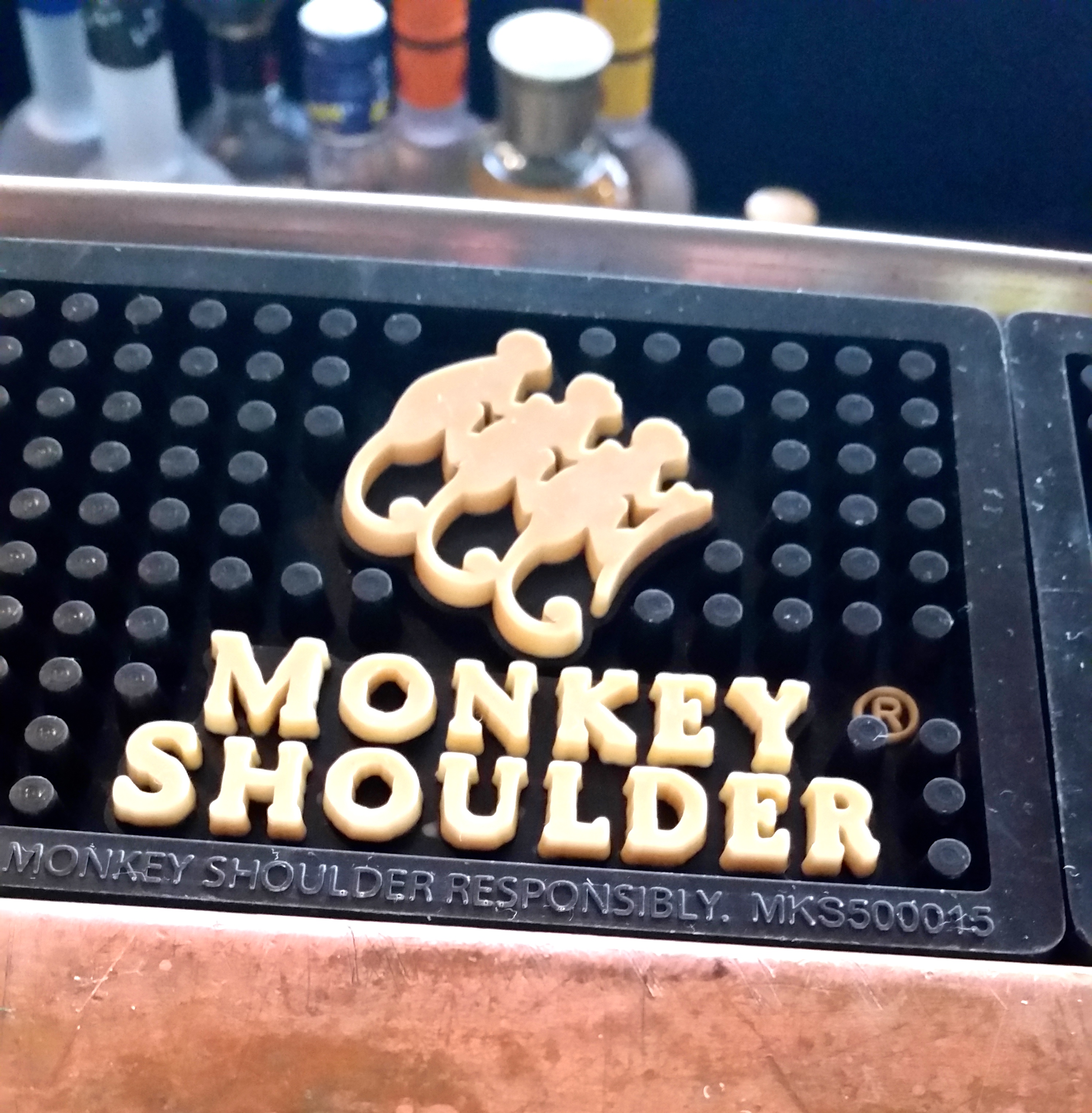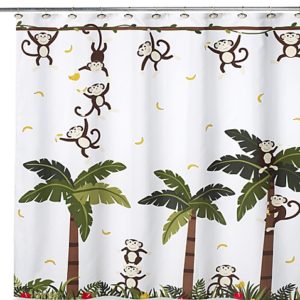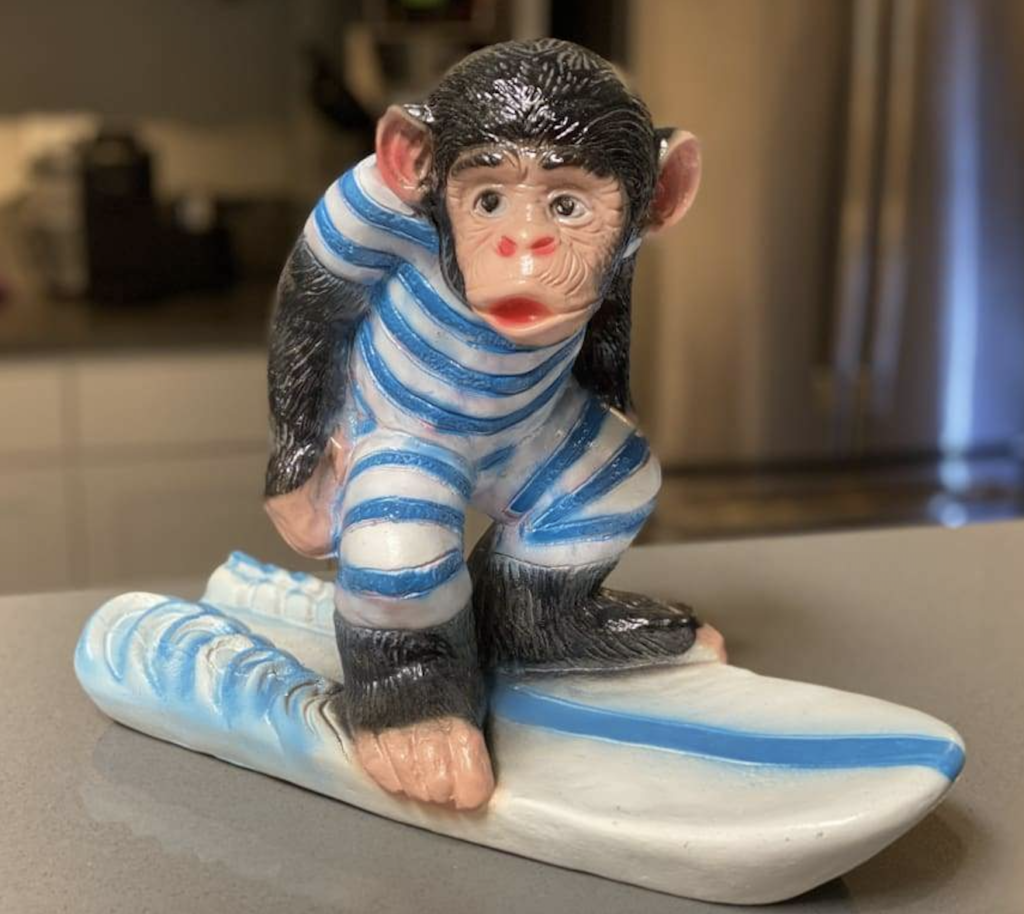
Sad days. No. No, not politics, wars or pandemics. Something much greater. Chango the Baja Surf Monkey is endangered. Borderline extinct.
Yeah, I know.
Five years ago, an enthusiast-level primatologist who we’ll call T. Butcher (because that’s what I call him), sent me this photo of a small portion of his primate collection. Last year, those same three pieces of art were stolen from his backyard.
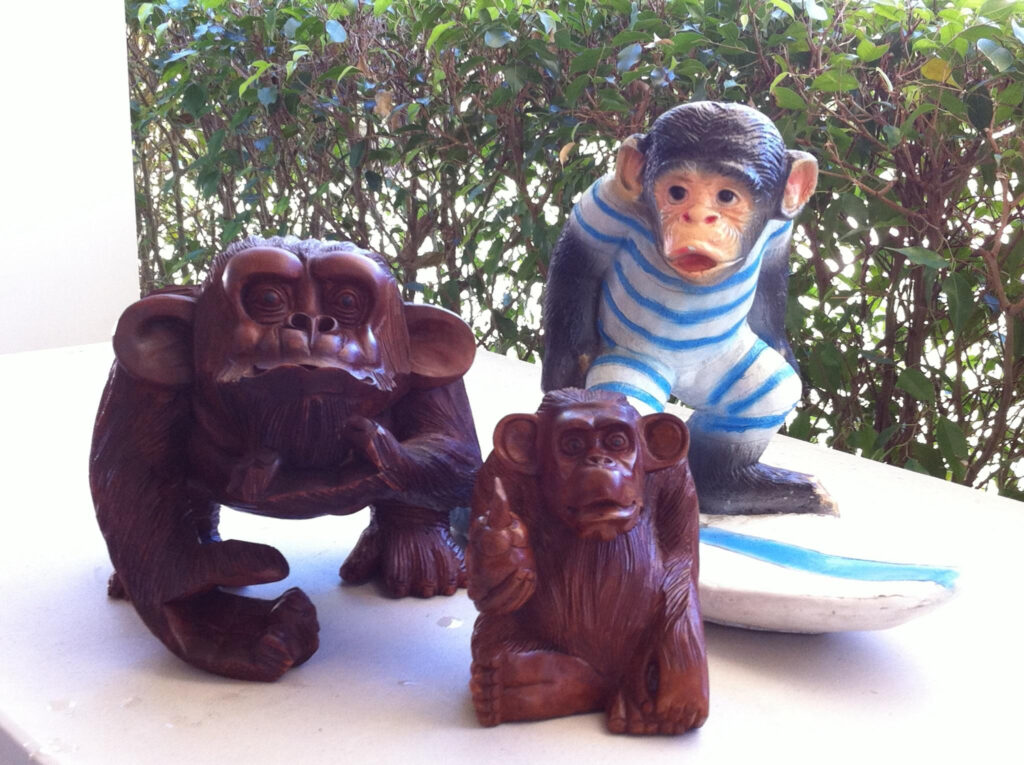
Most everyone of my 8 regular readers recognizes Chango – the painted ceramic surfing simian pictured above. For the other 4 of you reading this who don’t recognize Chango, let me explain.
For decades, Chango was the ubiquitous Southern California Garden Gnome. He’s a cheap, crappy, plaster-of-paris primate molded by the tens of thousands in Tiujana factories and was purchased at every border crossing for decades, by hungover gringos stuck in their cars for hours as they waited to drive back into the US. Chango was displayed for miles in every direction — as far as one could see. Every group of knuckleheads who road-tripped to TJ in the 80’s and 90’s bought one per carload on their way back and has their own blurry memories of a Tiujana trip associated with it. Remember when every boardwalk and carnival game prize in the whole country was a Spuds McKenzie stuffed animal? Multiply that by a bazillion, for decades. With your last $5, you could always count on getting a souvenir ceramic surf monkey and a pack of Chiclets on your way back.
I was hunting down some other rare monkey art pieces a few weeks ago in SoCal, when it dawned on me that I should easily be able to find a Chango for my collection and get an extra one to send to T. Butcher and surprise him.
“Odd,” I thought as I searched online. “There aren’t any on eBay, Nextdoor, OfferUp or…. anywhere.” [You know I was really thinking that, because it’s in quotation marks.] “I can’t just walk out my door and get a Chango for my yard, and an extra one, to send to T. Butcher?” This wasn’t supposed to be a project – just a minor errand.
Dig in. Start exploring. Going down the Baja Surf Monkey rabbit hole. ‘Cause that’s what I do.
No surf monkeys for sale. What the heck? Finally found a website http://www.surfmonkeyfellowship.com with all things Chango! It points me in the direction of West Coast Paddle Sports in Pacific Beach, San Diego, online store, “Our friend Bob at West Coast Paddle will ship you the monkey of your dreams! (He’s better at shipping these precious primates than we are).”
So, I ordered one online. A few days later was contacted by WCPS and they said they don’t ship them anymore – they break too easily. They have one left in the store, if I wanted to pick it up. Of course I did!
I arrived at WCPS and as I walked in the front door, there sat an enchanted crimson-and-white-stripped Chango, welcoming me from atop a display. Here is the photo of their store on the front page of their website — Chango, front and center. Bob was actually in the store that day, and I picked his brain on the odd unavailability of a Chango tchotchke. Wow, what a story! Chango actually disappeared for a while, and was resurrected by Beth Slevcove. The story on Slevcove’s savvy saving of the endangered Chango chimp appeared in a 2012 article in the San Diego Tribune:
“After decades of ruling the waves at borderline shops, the surf monkey’s popularity began to diminish with the introduction of more contemporary plaster-of-Paris pieces like Bart Simpson and Dora the Explorer. Eventually, production of the statue had diminished, molds were lost, and Chango’s future remained uncertain until a local surfer and longtime Baja traveler, Beth Slevcove, got involved.”
San Diego Union Tribune
[I feel like there is plenty of room for Chango, Bart Simpson and Dora to peacefully co-exist on the acres of outdoor retail shelf space at the border, but I guess supply and demand is never wrong. Sigh. Millennials.]
She tracked down the Chango mold in a Tiujana factory and convinced the owner to sell it to her. Apparently, Chango is still sporadically available in a few local San Diego surf shops. I love this next part. It seems that I (and my 8 regular readers) am not the only one with a passion for plaster primate pieces:
“By 2009, the Surf Monkey Fellowship was born and remains the only U.S. importer of the eight-toed plaster-of-Paris surf legend. …. Committed to preserving the 40-year-plus legacy of the surf monkey, Slevcove has learned a lot about Chango. Most notably, it’s actually not a monkey, but a chimpanzee (no tail). “This was confirmed by a primatologist,” chimes in Slevcove. “We take Chango very seriously.”
Beth Slevcove, as quoted in the San Diego Union Tribune
Chango ceramics are no longer available by the tens of thousands, however there is still a huge following and I think Bob and WCPS might be the only place left where these are sold. https://westcoastpaddlesports.com/products/the-surf-monkey
PLEASE take your own Chango journey! It’s fascinating! Do an online search of “Chango the Surf Monkey”:
XGames.com article — Surf Monkey on Endangered List
http://www.surfmonkeyfellowship.com/ You have to pour through every page of this site!!
2022 podcast with Beth Slevcove!! “How did an icon of border tchotchkedom become nearly extinct?”
Chango Lives! – The San Diego Union Tribune
Spreading the Chango love! “Chango–the best Friday the 13th ever”
